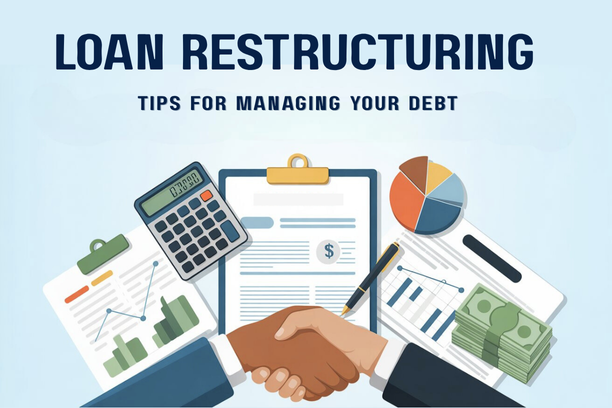Opening a store, whether a small neighborhood sari-sari store or a trendy online boutique, is a classic Filipino entrepreneurial dream. While a business plan is essential, so is the capital to get it off the ground. Getting a loan to start a store can be challenging, as traditional lenders often require a track record and collateral. However, the lending landscape in the Philippines has evolved, offering a variety of financing options tailored for new and small-scale entrepreneurs. This guide will walk you through the best financing options available and help you find the right fit for your new store.
The Hurdles of Traditional Lending for New Stores
When a new entrepreneur walks into a traditional bank, they are often met with a common hurdle: the absence of a business track record. Banks are naturally risk-averse institutions, and their lending models are built to support established businesses with a history of consistent revenue and profitability. This makes it incredibly difficult for a brand-new store, with no financial history, to secure a loan from a major commercial bank. Understanding this reality is the first step toward finding a more suitable financing partner.
The Strict Conditions of Commercial Bank Loans
Major banks in the Philippines, such as BDO and Metrobank, offer business loan products but their conditions are typically out of reach for a store that is just starting out. These loans are designed for businesses that have been in operation for at least one to three years. Lenders will require audited financial statements for the past few years, as well as a history of positive cash flow and consistent sales. A new store will simply not have these documents. This is a deliberate strategy by the bank to ensure the loan is a safe investment, as a history of profitability is the best indicator of a business’s ability to repay the loan.
In addition to financial history, commercial banks often require collateral, such as real estate, to secure the loan. For a new store owner, who may be renting a space and operating with minimal assets, this is a significant barrier. The collateral serves as a safety net for the bank; if the business fails to repay the loan, the bank can seize and sell the asset to recoup its losses. This requirement, combined with the need for a long track record, makes a traditional bank loan an impractical option for a new store. The entrepreneur’s time is better spent exploring financing options that are more aligned with their stage of development.
The application process itself is also often lengthy and involves multiple layers of review, from a credit committee to site visits. This extensive due diligence is necessary for a bank to approve a high-value loan, but it can be time-consuming and discouraging for a new business owner. For these reasons, a new store looking for its initial capital should not pin its hopes on a traditional bank loan. The key is to look for lending institutions that have a different approach to risk assessment and are willing to look beyond a multi-year financial history.
The Role of Lenders Who Look Beyond History
While traditional banks focus on the past, a growing number of lenders are focusing on a new store’s potential. They understand the catch-22 that new entrepreneurs face: you need money to build a track record, but you need a track record to get money. These institutions are more willing to take on a higher risk in exchange for a higher return. They have developed alternative methods for assessing a borrower’s creditworthiness, making their products a viable alternative for a new store.
Lenders who specialize in new businesses may look at a strong business plan, the entrepreneur’s personal credit history, and the potential of the store’s location. They might also assess the entrepreneur’s character, management skills, and previous experience in a related field. For example, a loan officer from a microfinance institution might be more interested in your reputation within your community than in your business’s financial statements. They understand that for a small store, the owner’s reputation and work ethic are the most important indicators of success.
For this reason, a new store owner should seek out lenders who are more flexible in their criteria. These lenders have developed a more inclusive approach that recognizes the unique challenges of a startup. They understand that a new business may not have collateral or a long history, but it may have a solid business idea and a passionate owner. By targeting these institutions, you are putting your application in front of lenders who are actually looking to help businesses like yours.
Your Best Financing Options for a New Store
Given the challenges with traditional banks, a new store owner must explore specialized financing options. These are the institutions that have products and services specifically designed for micro and small enterprises. They are more accessible, often have faster approval times, and have more lenient requirements, making them the most practical choice for getting a loan to start a store in the Philippines.

Microfinance Institutions (MFIs) and Government Programs
Microfinance institutions (MFIs) are a lifeline for countless small business owners in the Philippines, including those who run small neighborhood stores. Organizations like CARD MRI and ASA Philippines offer micro-loans with minimal collateral and simplified requirements. Their loans are often based on a group lending model or a personal guarantee, making them highly accessible. The application process is typically fast, with a focus on the business plan and the borrower’s personal character. The loans are usually for smaller amounts, perfect for covering initial inventory or renting a space.
In addition to MFIs, government agencies have also stepped in to support small-scale entrepreneurs. The Pondo sa Pagbabago at Pag-asenso (P3) program, a loan product from the Small Business Corporation (SB Corp), is designed to provide accessible and affordable financing for micro and small enterprises. It offers low-interest loans that can be used for working capital or for purchasing new equipment. The requirements are much more lenient than those of commercial banks, making it a great option for a new store. The DTI also supports a variety of loan programs that are often funneled through MFIs and other lending partners.
The key advantage of these programs is their mission-driven nature. Unlike commercial banks that are driven by profit, MFIs and government programs are focused on economic inclusion and poverty alleviation. This means they are more willing to take on the risk of lending to a new business. Their interest rates are often lower than those of informal lenders, and their loan terms are designed to be more flexible. A new store owner should start their search here, as these institutions have a long-standing track record of supporting small businesses just like theirs.
Fintech and Alternative Lending
In the age of digital commerce, new store owners also have access to a variety of innovative fintech lenders. These companies have leveraged technology to create a faster, more flexible lending model. For example, if you plan to accept payments through a platform like Maya Business or GrabPay, you may be eligible for a business loan based on your transaction history. The more transactions you process through their platforms, the more data they have to assess your creditworthiness. This is a revolutionary approach that bypasses the need for traditional financial statements and a multi-year history.
Fintech lenders also offer a variety of products that are well-suited for a new store. Some offer a revolving line of credit, which is perfect for managing a store’s daily cash flow and inventory needs. Others offer invoice financing or inventory-based loans. The application process is often entirely online, with approval and disbursement happening in a matter of days. This speed is crucial for a new store owner who needs to quickly secure funds to take advantage of a market opportunity or to cover an unexpected expense.
The rise of crowdfunding is also an option for a new store. While not a traditional loan, platforms like crowdfunding websites allow an entrepreneur to raise capital from a large number of people. It is a way to test your business idea, build a community of supporters, and secure the funds you need without having to go through a formal loan application process. These options are a testament to the changing lending landscape in the Philippines, and they are all viable alternatives for an entrepreneur looking to start a new store.
Conclusion
Securing a loan to start a store in the Philippines can be challenging, but it is far from impossible. While traditional banks may not be the right fit, microfinance institutions, government programs, and fintech lenders offer accessible and flexible financing options. By understanding the unique conditions of these lenders and targeting your application to the right institution, you can get the capital you need to turn your entrepreneurial dream into a thriving reality.













